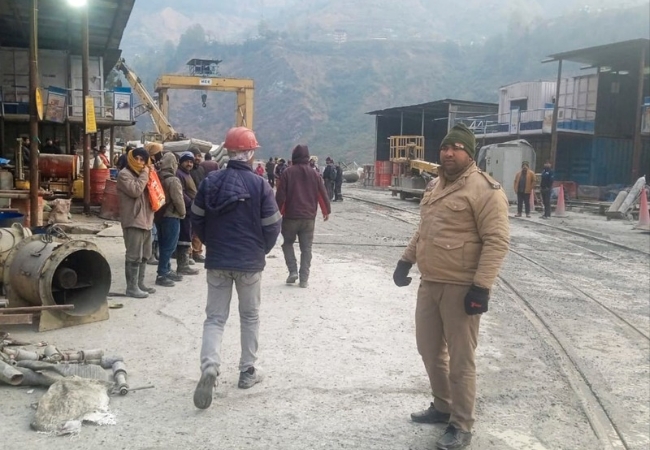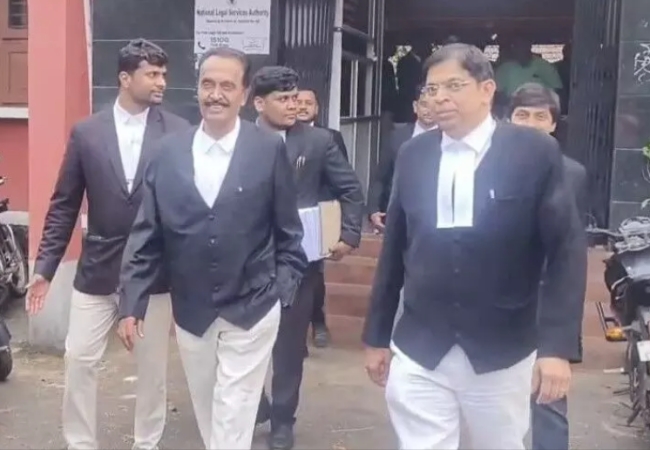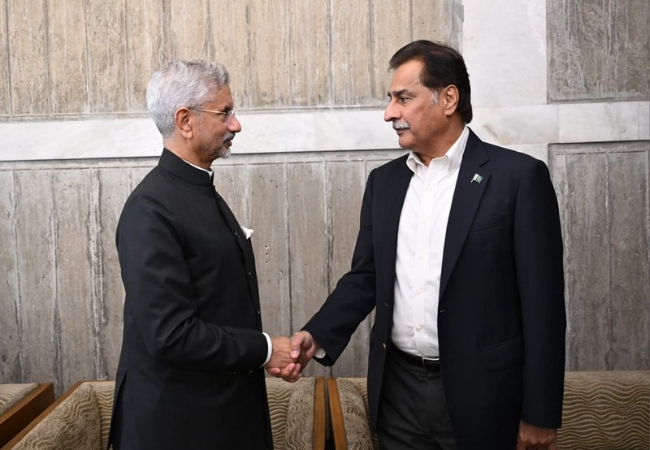New Delhi, Nov 2: The government on Saturday released the maps of newly created Union Territories (UTs) of Jammu and Kashmir, and Ladakh and the map of India depicting these UTs.
In a statement, the Ministry of Home Affairs said the UT of Ladakh consists of two districts of Kargil and Leh while the rest of the erstwhile state of Jammu and Kashmir is in the UT of Jammu and Kashmir.
In 1947, the erstwhile state of Jammu and Kashmir had the following 14 districts - Kathua, Jammu, Udhampur, Reasi, Anantnag, Baramulla, Poonch, Mirpur, Muzaffarabad, Leh and Ladakh, Gilgit, Gilgit Wazarat, Chilhas and Tribal Territory.
By 2019, the government of erstwhile state of Jammu and Kashmir had reorganised the areas of these 14 districts into 28 districts.
The names of the new districts were - Kupwara, Bandipur, Ganderbal, Srinagar, Budgam, Pulwama, Shupian, Kulgam, Rajouri, Ramban, Doda, Kishtivar, Samba and Kargil.
Out of these, Kargil district was carved out from the area of ??Leh and Ladakh district.
The Leh district of the new UT of Ladakh has been defined in the Jammu and Kashmir Reorganisation (Removal of Difficulties) Second Order, 2019, issued by the President of India, to include the areas of the districts of Gilgit, Gilgit Wazarat, Chilhas and Tribal Territory of 1947, in addition to the remaining areas of Leh and Ladakh districts of 1947, after carving out the Kargil District.
The maps prepared by Survey General of India depicting the new UTs of Jammu and Kashmir, and Ladakh, as created on October 31, 2019, along with the map of India, are released, the statement said.
On the recommendation of Parliament, the President effectively dismantled Article 370 of the Indian Constitution and gave assent to the Jammu and Kashmir Reorganisation Act, 2019.
Under the leadership of Prime Minister Narendra Modi and supervision of Union Home Minister Amit Shah, the erstwhile state of Jammu and Kashmir has been reorganised as the new Union Territory of Jammu and Kashmir and the new Union Territory of Ladakh on October 31, 2019, the statement said.
Let the Truth be known. If you read VB and like VB, please be a VB Supporter and Help us deliver the Truth to one and all.
Gopeshwar/Dehradun (PTI): Chamoli District Magistrate Gaurav Kumar on Wednesday ordered a magisterial inquiry into the collision between two loco trains inside the Pipalkoti tunnel of the under-construction Vishnugad-Pipalkoti hydropower project, which left 88 people injured.
Earlier in the day, Kumar said that the accident occurred around 8.30 pm on Tuesday at the TBM (Tunnel Boring Machine) site inside the tunnel being built by THDC (India).
A loco train carrying workers for tunnel excavation during the night shift was about two kilometres inside the tunnel when another loco train coming from the opposite direction lost control and collided with it.
One of the trains had workers and officials on board, while the other carried material.
Upon receiving information about the collision, Uttarakhand Chief Minister Pushkar Singh Dhami ordered proper treatment for the injured. He spoke to the DM over the phone and instructed him to ensure that all the injured receive the best possible medical facilities.
DM Kumar and Superintendent of Police Surjit Singh Panwar met the injured at the Gopeshwar District Hospital.
Kumar said 109 people were on board the loco train at the time of the accident, most of them labourers. None of the injured was serious, he said.
He said that 88 of them were injured, although none of them are in serious condition. They said that 84 workers were discharged after receiving first aid, while four are still hospitalized.
DM Kumar and SP Panwar also inspected the project site and sought detailed information about the incident from the project officials.
They instructed them to strictly implement all necessary safety standards to prevent a recurrence of such an incident in the future.
After inspection, the DM issued orders for a magisterial inquiry into the accident caused by the collision of the loco trains.
Meanwhile, the Railways said the trains involved in the collision had no connection with it.
"It is clarified that this unfortunate incident occurred in Uttarakhand's Chamoli district, involving a trolley used in the local transportation system during the construction of a hydroelectric project tunnel. The train referred to in the news reports is not an Indian Railways train, but a transportation system being used locally by the project team," the government entity said in a statement.
According to officials, rail-like vehicles are used to transport workers, employees, and materials for construction work inside the tunnel.
The project, being built between Helang and Pipalkoti on the Alaknanda River, will generate 444 megawatts of electricity through four turbines. The project is targeted for completion by next year.





